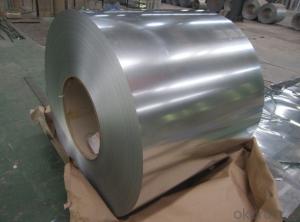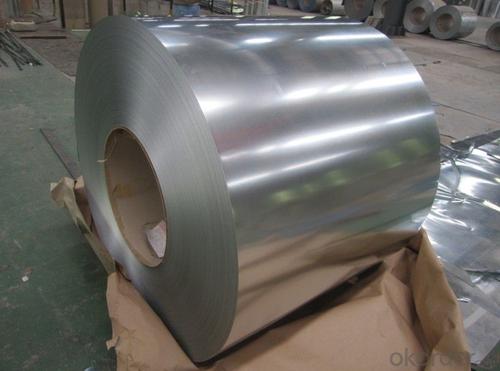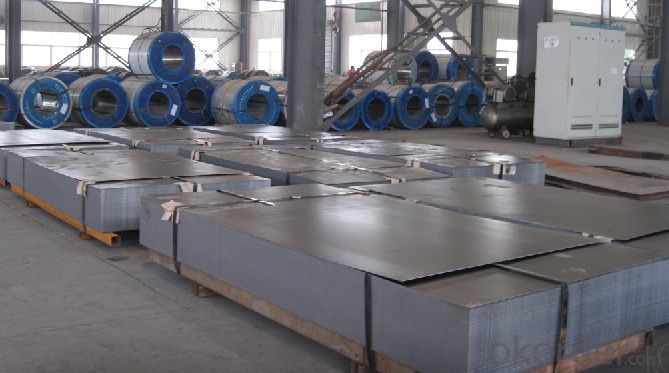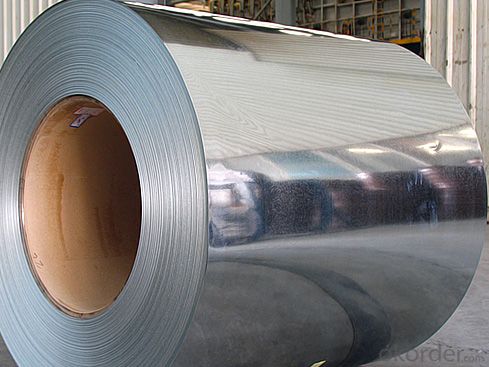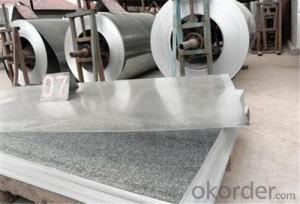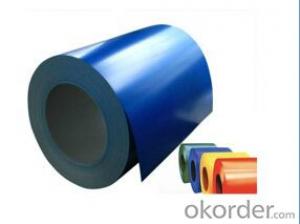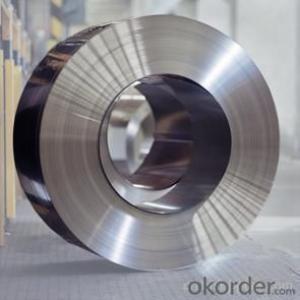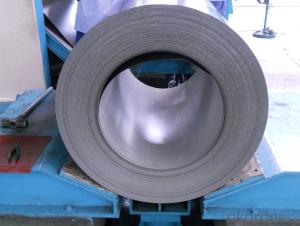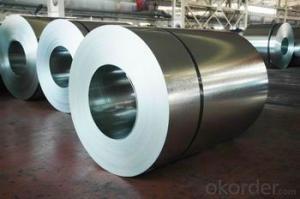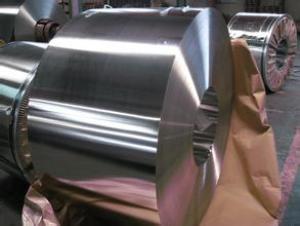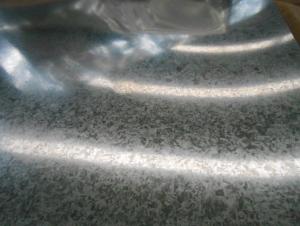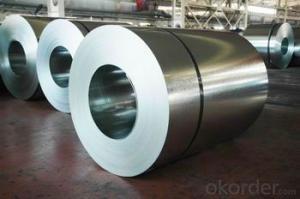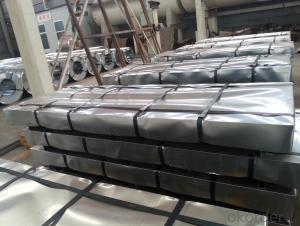Hot-Dip Galvanized Steel Sheet Qualified-EN10327
- Loading Port:
- China main port
- Payment Terms:
- TT OR LC
- Min Order Qty:
- 50 m.t.
- Supply Capability:
- 10000 m.t./month
OKorder Service Pledge
OKorder Financial Service
You Might Also Like
Hot-Dip Galvanized Steel Sheet Qualified-EN10327
1.Structure of Hot-Dip Galvanized Steel Sheet Description:
Hot-dip galvanized steel coils are available with a pure zinc coating through the hot-dip galvanizing process. It offers the economy, strength and formability of steel combined with the corrosion resistance of zinc. The hot-dip process is the process by which steel gets coated in layers of zinc to protect against rust. It is especially useful for countless outdoor and industrial applications.
2.Main Features of the Hot-Dip Galvanized Steel Sheet:
• Smooth and flat surface
• Workability, durability
• Excellent anticorrosive property
• High strength
3.Hot-Dip Galvanized Steel Sheet Images

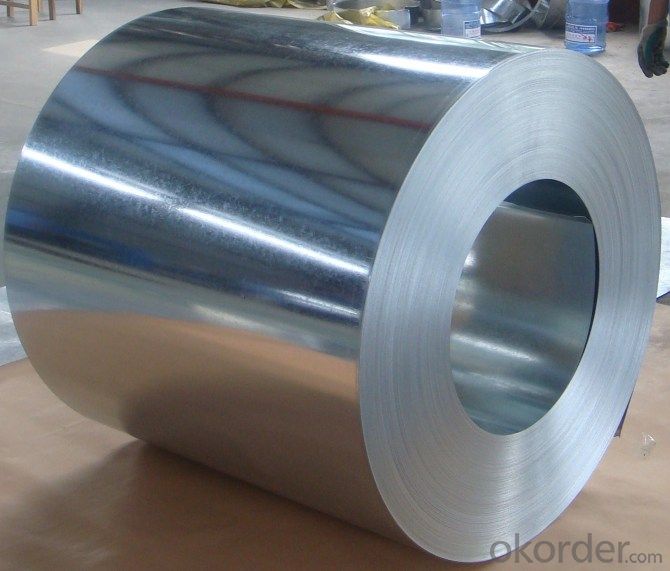
4.Hot-Dip Galvanized Steel Sheet Specification
Standard: ASTM, JIS,EN
Grade: CS, DX51D+Z,SGCC, SS 230~550,S220GD+Z~S550GD+Z, SGC340~SGC570
Thickness: 0.18mm~5mm
Width: max 2000mm
Coil weight:3-12 MT
5.FAQ of Hot-Dip Galvanized Steel Sheet
1.How to guarantee the quality of the products?
We have established the international advanced quality management system,every link from raw material to final product we have strict quality test;We resolutely put an end to unqualified products flowing into the market.
2. How long can we receive the product after purchase?
Usually within thirty working days after receiving buyer’s advance payment or LC. We will arrange the factory manufacturing as soon as possible. The cargo readiness usually takes 15-30 days, but the shipment will depend on the vessel situation.
- Q: How are steel coils tested for mechanical properties?
- Steel coils are tested for mechanical properties through various methods, including tensile testing, hardness testing, and impact testing. Tensile testing involves stretching the steel coil until it breaks to determine its strength, elasticity, and ductility. Hardness testing measures the resistance of the steel to indentation or scratching, indicating its overall toughness. Impact testing involves striking the coil with a pendulum to assess its ability to absorb energy without fracturing. These tests help evaluate the quality and performance of steel coils in different applications.
- Q: What is the difference between regular steel stainless steel? Why does steel rust but stainless wont? Is stainless some kind of alloy or something? Any knowledgeable input would be great. Thanx!
- There are many things in life that I wonder about. Being in the steel industry and selling stainless steel I have at one point in my life asked myself, why do they call it stainless steel? What makes it stainless? It doesn't take much to find out but here is a very brief synopsis of what makes stainless steel stainless so that you can check one more thing off the list in your quest for knowledge. Stainless Steel might or might not have been invented by a man named Harry Brearley in 1912. Steel has been around for hundreds of years but it hasn't always been stainless. Only after the exact combination of elements had been achieved did we start calling a certain type of steel stainless. His magic potion contained the keys to what is now called stainless steel. That being said, the true inventor of stainless is still an ambiguous cloud at best. However, this isn't a discussion on WHO invented stainless but what stainless is and how it's actually stainless. Here is a great article posted by British Stainless Steel Association in regards to the history of stainless as a whole, see here. So what is in this magic potion that makes a steel not stain or rust? As most of us know if you leave regular steel or metal out in the elements it will rust, oxidize, or stain. Why does stainless not stain? When Harry Brearley Brearley created a steel with 12.8% chromium and 0.24% carbon, that was believed to be the first ever stainless steel. Chromium is the element in stainless that improves the corrosion resistance by forming a chromium oxide film on the steel. This very thin layer, is what allows the steel to be impermeable to rust or staining and when placed under the right conditions, it can also be self-repairing to a certain extent. There you have it. The answer is Chromium. Chromium is the element when mixed w/other elements in the proper amounts to form the thin layer that protects the steel from rusting, staining or corroding. Hope that helps you in your pursuit of knowledge.
- Q: Are steel coils affected by magnetic fields?
- Magnetic fields can indeed have an impact on steel coils. Steel, being a ferromagnetic material, has the ability to be magnetized or attracted to magnets. When a steel coil is subjected to a magnetic field, it can develop its own magnetic field, resulting in magnetization. The consequences of this magnetization depend on the strength and duration of the magnetic field. In situations where the magnetic field is strong and the coil remains exposed to it for a considerable period, the steel coil may retain some magnetism even after the magnetic field is no longer present. This can create difficulties in certain applications that call for a non-magnetic material, as the magnetized steel coil may attract or disrupt nearby objects. Conversely, if the magnetic field experiences frequent changes or fluctuations, it can induce electrical currents within the steel coil through a process called electromagnetic induction. These currents, known as eddy currents, can generate heat within the coil. This heat can lead to energy losses and potentially damage the coil. Therefore, it is vital to carefully consider the impact of magnetic fields on steel coils in various applications. Protective measures, such as shielding or demagnetization processes, may be necessary to minimize the consequences of magnetic fields on steel coils, when deemed necessary.
- Q: rust is not a issue. i was looking a D2 steel but heard story's of it chipping and breaking
- Ok, lets define what is Damascus steel. The modern Damascus is basically any steel that shows a pattern. Patterns are accomplished by 1. manipulating the crystal structure or 2. by combining 2 or more different alloys together. The blade you are looking at is referred to as a pattern welded blade. Damascus is only as strong as it's base components + heat treat and design. The strongest will be obtained by combining high carbon and low carbon steels. I do this by using steel cable. The patterns aren't real bold but are interesting none the less. To break it you must brake the hard steel and tear through the soft iron. The laminated stuff works the same way. For greater edge holding I use all high carbon, varying alloy content from simple carbon to chromium/nickle alloys. These are what you normally find in pattern welded blades. A fine pattern that has many lamination's crossing the edge will offer the best edge holding. Properly done one can get the DCE or damascus cutting effect where the soft layers wear away faster than the hard layers almost making the blade self sharpening. Is that blade good? Buy it if you like it, it won't compare to a well made hand forged blade but is much cheaper. sorry for the overload.
- Q: Who started or popularized the use of the steel guitar in country music? Early country songs contained no steel guitars but by 1950 the steel guitar had become a staple of country music.
- There was the Dulcimer that was drowned out by the Accordeen. The Dobro was the natural evolution that led to the steel guitar or Slide Guitar as an electrical version to replace the American origin Dulcimer. An early player of the slid guitar was Ray Keefer who played at the Grand ol Opry and in the 40s before and after WWII.
- Q: Aluminum alloy rolling doors and color steel shutter door that good
- The material and structure design Aluminum Alloy rolling shutter door out of the ordinary, can effectively prevent glare and ultraviolet radiation, sunlight greenhouse effect on indoor has completely solved, applicable to all kinds of changes in climate and weather, has a long-term protective effect on indoor environment, tests show that the shutter doors and windows to keep out sunshine rate to 100%, the the rate can reach more than 95% block temperature.
- Q: How do steel coils contribute to the water and wastewater industry?
- The water and wastewater industry heavily relies on steel coils as a crucial component for constructing and maintaining its infrastructure. These coils, made from high-quality steel, offer numerous advantages for the industry. To begin with, steel coils are essential in the production of pipes and tubes used primarily for transporting water and wastewater. Steel pipes are renowned for their exceptional strength and durability, enabling them to withstand high pressure and heavy loads. This makes them ideal for water distribution systems, sewage networks, and treatment plants. Steel coils provide the necessary material to manufacture these pipes, ensuring reliable and long-lasting infrastructure. Furthermore, steel coils are also utilized in constructing storage tanks and reservoirs. These tanks are vital for water treatment plants, serving as storage for large volumes of water or wastewater during the treatment process. Steel coils provide the required material for fabricating these tanks, guaranteeing their structural integrity and preventing leaks or contamination. Moreover, steel coils are used in manufacturing various equipment and components indispensable in the water and wastewater industry. For instance, steel coils are employed to produce pumps, valves, and control systems, which are crucial for the efficient operation of water treatment plants, pumping stations, and sewage networks. Steel's strength and corrosion resistance make it an ideal material for these applications, ensuring reliable and long-lasting equipment. Additionally, steel coils are also employed in constructing wastewater treatment plants and facilities. These plants employ various processes to eliminate contaminants from wastewater before discharging it into the environment. Steel coils provide the necessary material for constructing these facilities, including structural supports, tanks, and other components. The durability and resilience of steel ensure the longevity and efficiency of these treatment plants. In conclusion, steel coils play an integral role in the water and wastewater industry by contributing to the construction and maintenance of critical infrastructure. They are used in manufacturing pipes, tanks, equipment, and facilities, guaranteeing the strength, reliability, and durability required for the efficient operation of water and wastewater systems.
- Q: Is it possible that stainless steel watches get rust. Any experience? Thanks.
- Under certain conditions, even stainless steel will rust. They include: Exposure to some noble metals (copper/silver) in a corrosive atmosphere - and why stainless must be separated from silver or silver plate in a dishwasher. Stainless steel will pit if touching silver as many DW detergents are rich in chlorine. Under some conditions, and depending on your skin chemistry, if you wear a copper bracelet on the same arm as the watch, the surface of the watch will pit. If you commonly are exposed to some kinds of welding fluxes, if you are exposed to water with high salt concentration and you do not rinse off the watch after exposure, that can pit the surface. Stainless Steel is no more than corrosion-resistant, not corrosion-proof. Most of the time under most conditions, it is fine. But not all of the time under every condition. As it happens, what affects SS the most is any kind of electrolysis due to galvanic action involving halogen salts.
- Q: I'm quite confused...i watched all of steel angel kurumi (the 28 episodes) and then continued to steel angel kurumi zero. it was an entire different story line with only the steel angels being the same. the world is different the guys are different, and there is a new character. Even the humor is gone. its like a whole different series. So what gives, what is the relationship between them?
- Steel Angel Zero is an OVA (Original Video Animation), a very short animation that went straight to DVD. It probably was written because Kurumi was so popular, and the producer wanted to check the waters for whether they should make a second season. It's pretty hard to keep track of what anime is which, especially in the more popular series. If you think Zero is worth zero, try Steel Angel Kurumi 2 (anime, 12 episodes), and Steel Angel Kurumi Encore (OVA, 4 episodes) as well.
- Q: What is the thickness range of steel coils?
- The thickness range of steel coils can vary depending on the specific application, but it typically ranges from 0.005 inches to 0.5 inches.
Send your message to us
Hot-Dip Galvanized Steel Sheet Qualified-EN10327
- Loading Port:
- China main port
- Payment Terms:
- TT OR LC
- Min Order Qty:
- 50 m.t.
- Supply Capability:
- 10000 m.t./month
OKorder Service Pledge
OKorder Financial Service
Similar products
Hot products
Hot Searches
Related keywords
